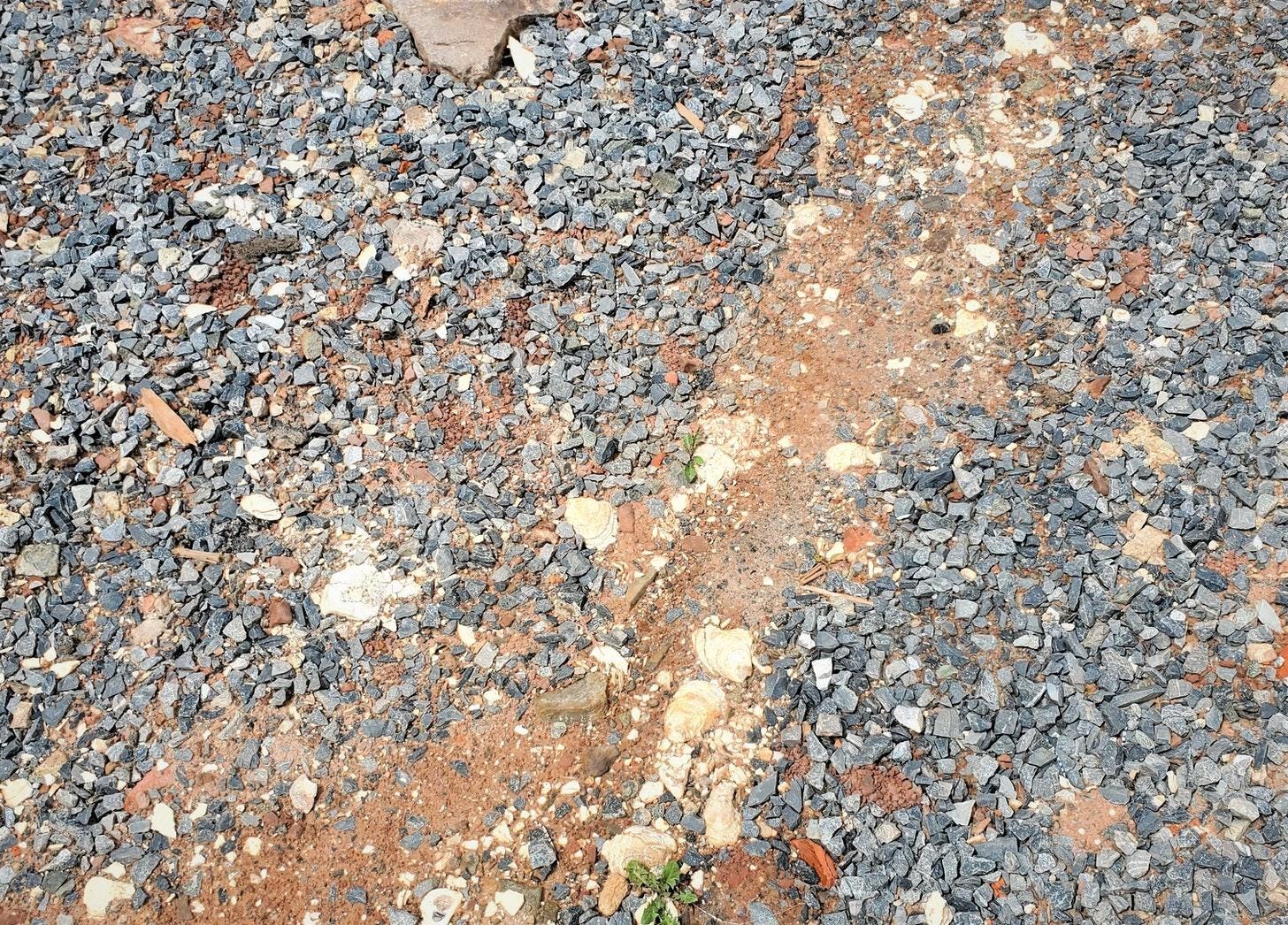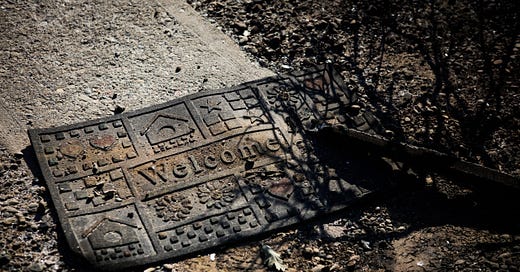
NIMBYism Is a Distorted Love
Places stay alive by making a little bit of change, all over, all the time.
Every time I visit my parents in my central New Jersey hometown, I find more and more to write about. It’s a natural result of getting to know any place more deeply. Following a recent week up there, I wrote about an old cellar with manhole access under a convenience store on Main Street in Flemington, the county seat of semirural Hunterdon County. I’ve walked past it (and over it) any number of times, and had no idea of its history.
It was so exciting to walk down the rickety stairs into that basement. Doing so helped me see my little hometown in greater perspective: I felt my view of its history expanding to cover decades, even centuries. The building is a microcosm of Flemington, and of how communities we love today came to be. It began its life in the 1800s, served as an oyster house for a time (ice for the oysters was dropped down the manhole), and it has been, in different forms and with different tenants, a part of the town’s fabric for well over a century.
History isn’t just lectures and books. It’s dimly lit basements with previous lives and narrow, creaky staircases behind convenience-store counters. It’s generations of people who, over time, build a few parcels of land surrounded by farm fields into a place. We all know this, but it’s not something I ever truly felt until I started to work on this beat professionally.
I think this is important. What I write about and advocate—mostly, for things like walkable urbanism and against knee-jerk NIMBYism—doesn’t come from abstraction or ideology, or a desire to impose my idea of the good life on others. The other day, a progressive housing advocate in Maryland tweeted, “Many assume advocates for change in housing policy just, like, love change. Trust me I’m at least as scared of it as you are, but anxiety doesn’t give us an excuse to demand our comfort zone.”
This might sound radical but I think there's a lot of truth to it. Much of the resistance to growth, to building things, comes not from principled opposition but inertia and familiarity. There was a time when I would have agreed completely and unreflectively with NIMBYs or preservation maximalists. Circa 2010, I thought the people who wanted to take down a rotted wood building on Main Street and build new apartments behind the façade of the old hotel hated Flemington and wanted to destroy it. I repeated that, as a kid in high school, because it was the opinion I inherited as a suburbanite in the orbit of a historic small town.
But over time, I’ve come to see it differently. It’s interesting: The first few years after I moved away, I didn’t have any particular interest in going home, but nowadays I find that I’m eager to visit. What changed? Well, change itself—it’s finally come to Flemington.
An old, long-vacant auto garage on Main Street is slated to become a café, with the original structure retained and adapted. The historic Union Hotel is being restored, with new hotel rooms, apartments, and ground-level retail going into the space. The town’s abandoned Liberty Village outlet mall—arguably the first outlet mall in the nation—will become residential streets with some connectivity to the town’s street grid. I understand other businesses are coming, and some existing buildings will be modified to accommodate new growth.
These new projects—opposed by many who see themselves as safeguarding Flemington’s history and identity, as I would have when I was a Flemington high schooler—have actually made me miss the town more, and added to my affection for it as the place where I grew up. That seems paradoxical: How could making the town different from how I remember it rekindle my sense of it being home?
I feel hopeful about the upcoming changes in part because of what I’ve learned in the last couple of years about the town’s history. As long as I’ve been alive, Flemington’s Main Street has been pretty much the same, granting normal economic ups and downs. (Its prospects were high in the early 2000s, down in the 2010s, heading back up now.) But it hasn’t always looked and felt that way. For example, I’ve learned about the small supermarkets that used to be right on Main Street; the history of some of the buildings, many of which are from the late nineteenth century, and which replaced earlier buildings; the local industries—peach growing, glass, ceramics—and the rail lines and once-active train station (now a bank) that put this little town on the map.
The realization brought on by all this is that Flemington has “belonged” to many different people, and does not “belong” to any single person or property owner or developer. Its history is granular, incremental, and distributed—by growing up in a place like this, I was lucky to wade into a stream that has run long before and will run long after.
This perspective helps me step outside of the narrow point in time during which I knew this place most intimately, and to avoid mistaking my nostalgic memories for the place itself. Our tendency to view quaint old towns not as functioning little cities but as suburban lifestyle amenities is anomalous. NIMBYism can be a kind of distorted love, one that conflates a place’s present physical form with its essence, and ends up destroying both of them. I keep thinking about something zoning scholar M. Nolan Gray said at his book talk in Washington last month:
Gray was talking about older folks in extremely expensive neighborhoods that were once middle class, and how these older residents will wonder why, for example, their children are leaving, and they feel lonely and isolated in their retirement years. “Their community has been destroyed by not allowing the built environment to change,” he said.
Their community has been destroyed by not allowing the built environment to change.
To some, perhaps that’s just eloquent nonsense. But I think it’s profound. Being an urbanist has helped me to understand that a community and its built environment at any given moment in time are separable. It’s the kind of insight that changes how you perceive many different things.
So instead of seeing the town’s current state as its essence, I’ve come to feel that it would in some way dishonor the people who built it—and other places like it—to decide that it has reached its final point now, with us, and to shut down all future versions of what it might be. If residents of Flemington in the 1880s had declared their Main Street to be a historic district that needed to be statically preserved, well, we wouldn’t have the Main Street we now love and protect.
We owe it to ourselves and to the future to keep building where we live, to keep iterating, to see people as a resource, and to see growth not like cancer but like childbirth: something painful and beautiful at the same time, something that takes away some things while opening up many more. There’s a sense of richness, of layers, to these places that can’t be achieved all at once. You only get character like that a little at a time, year by year, generation by generation. It’s gauche to brag about being humble, but I think of this outlook as a form of humility in light of our short time in physical sites of community that have been active for much longer. In my opinion, it’s a way of thinking that our places could use a lot more of.
During the same visit into town when I saw the old ice cellar under the convenience store, I met Flemington’s mayor, and she showed me around the Union Hotel worksite next door. She pointed to the ground that had been dug up during demolition of the back portions of some of the buildings, and I snapped this picture:

Photo by the author.
In case you don’t recognize them: Those are oyster shells. A past I had no idea about, hidden underneath the rotted building that, if it had been up to me at the age of 18, I would have kept around, offloading the burden of restoration and maintenance onto someone else—and foreclosing the opportunity for a new generation to live and do business here, and to keep alive the project of building more of a place I professed to love.
When I look at an American main street that has been frozen out of love and fear, I see something worth protecting—but I see possibility, too. What we build in places like this must be good. It must add another layer and take another step in the project of making a place. But we don’t do that either by making it impossible to build or by overregulating small-scale enterprise. Instead, we do it by making more room for the small scale, by escaping the dynamic that obtains in so many places of inertia or decay punctuated by cataclysmic change from the top down. It’s possible to avoid this through a little bit of change, all over, all the time.
This is not change for its own sake, but change as a natural result of people doing productive things. Change that looks like maintenance and, from time to time, renewal. That’s the heartbeat of places that are alive, the heartbeat you can feel when you read about the history of any eighteenth- or nineteenth-century American settlement that still exists today.
That’s why new projects make me excited to remember and visit my hometown. Yes, it will look a little different. But reading about its long, lively history gives me a sense of wonder, and when I get back to town, I feel as though that history is jumping off the page and into the street.












